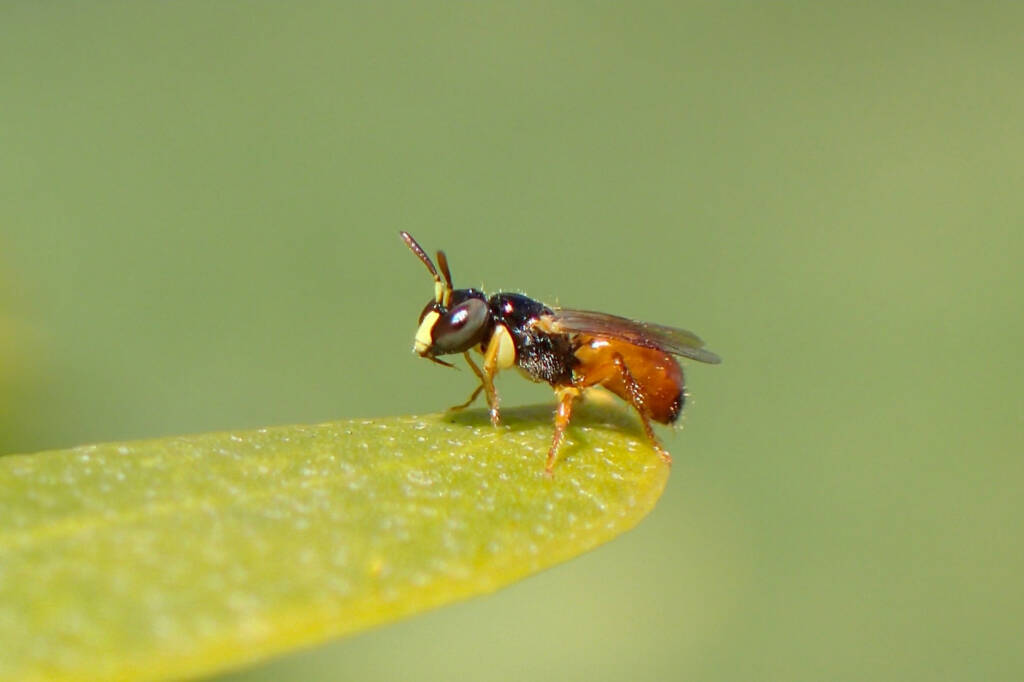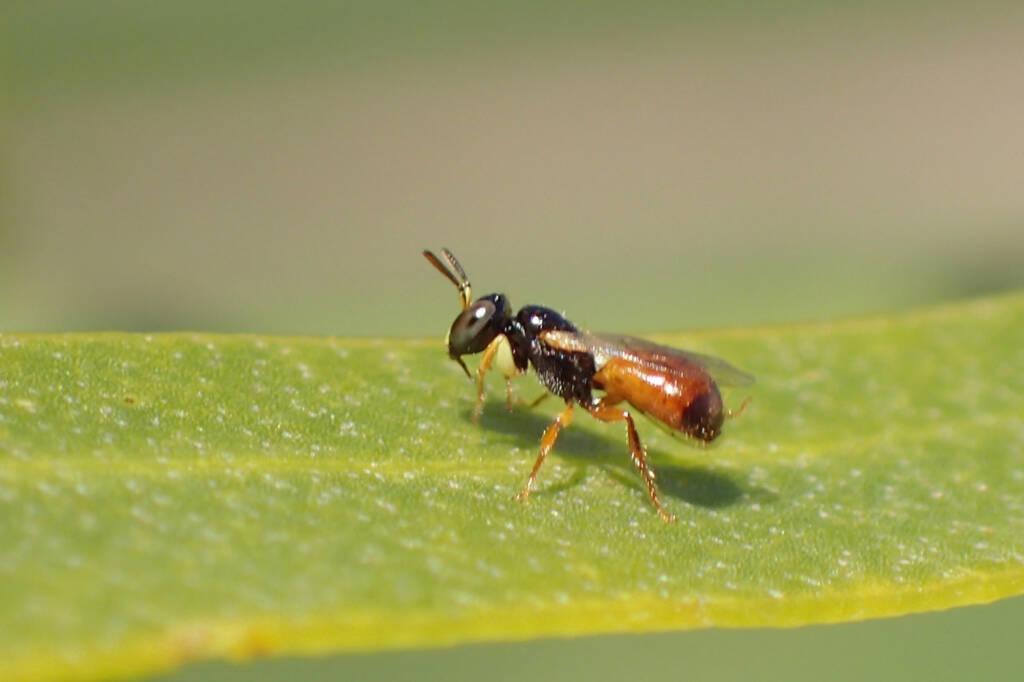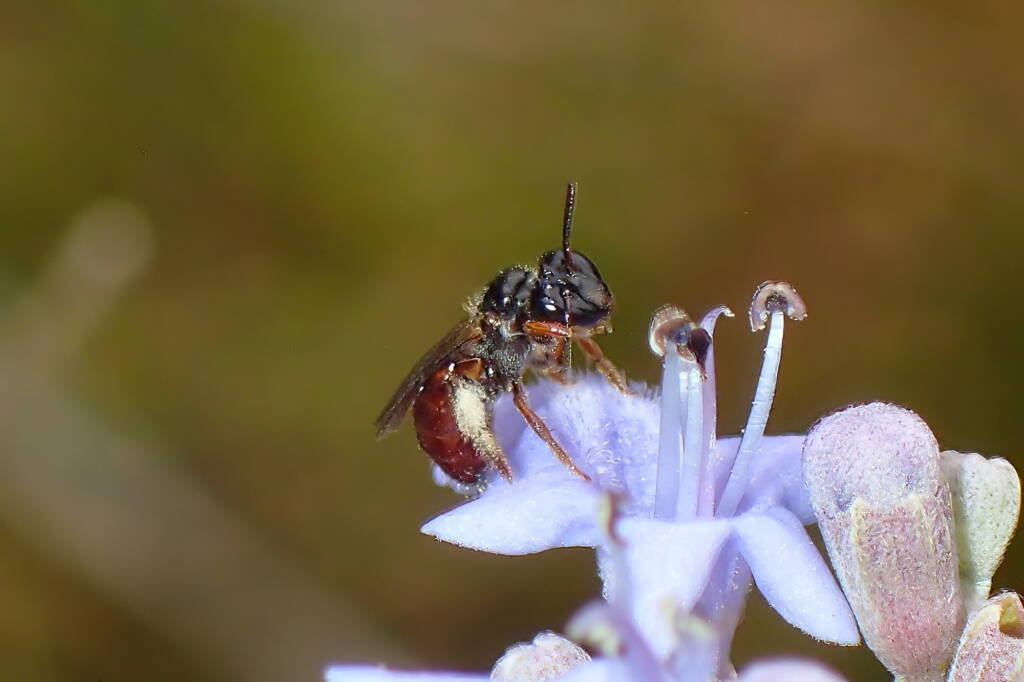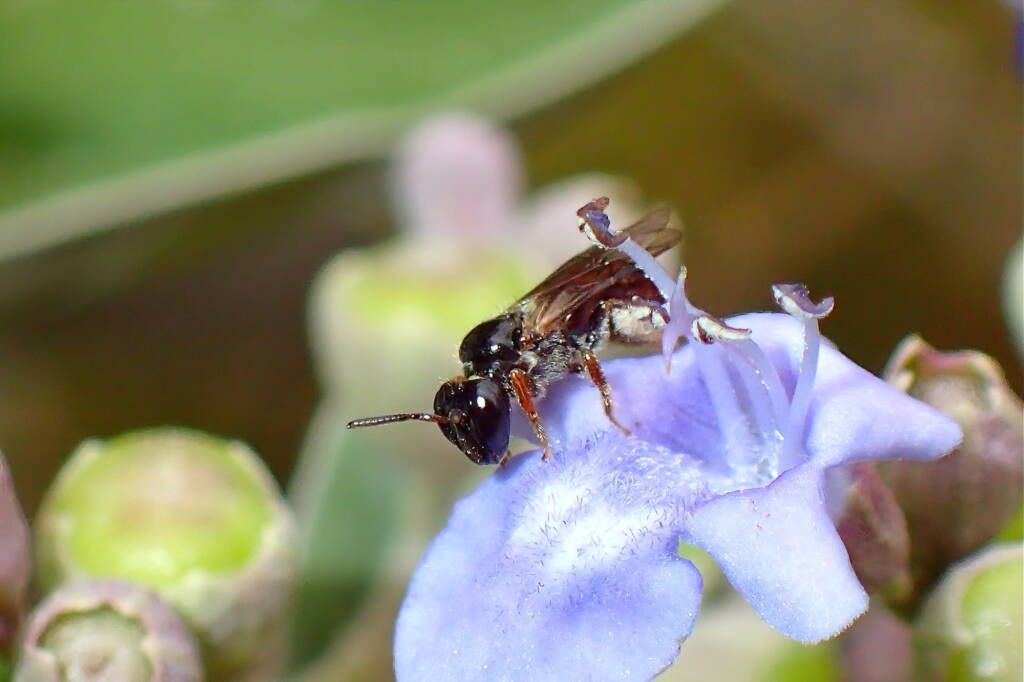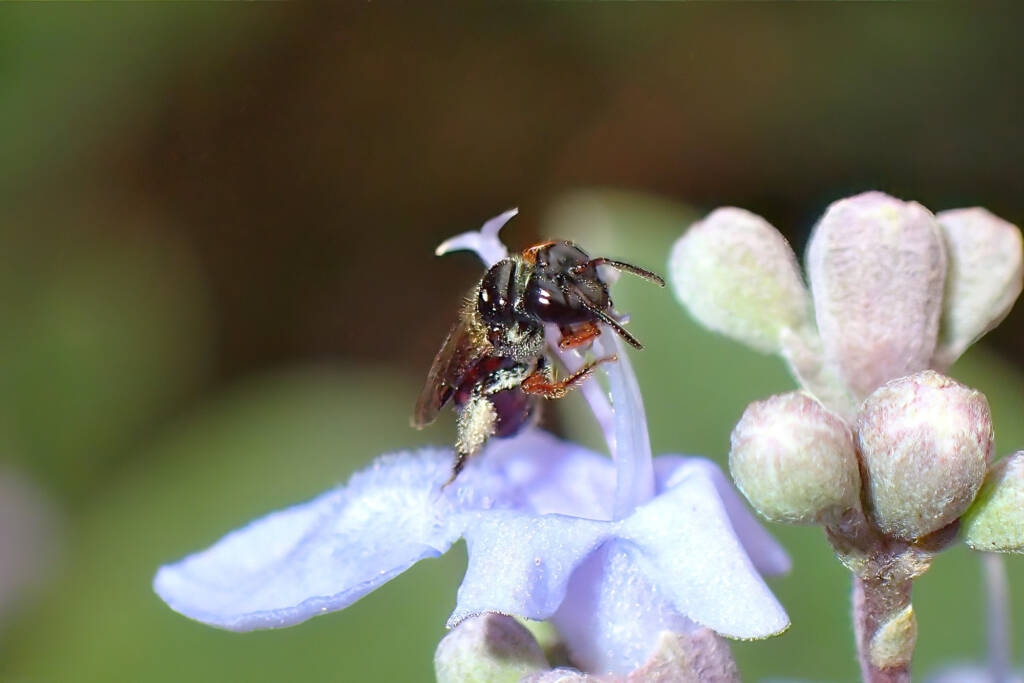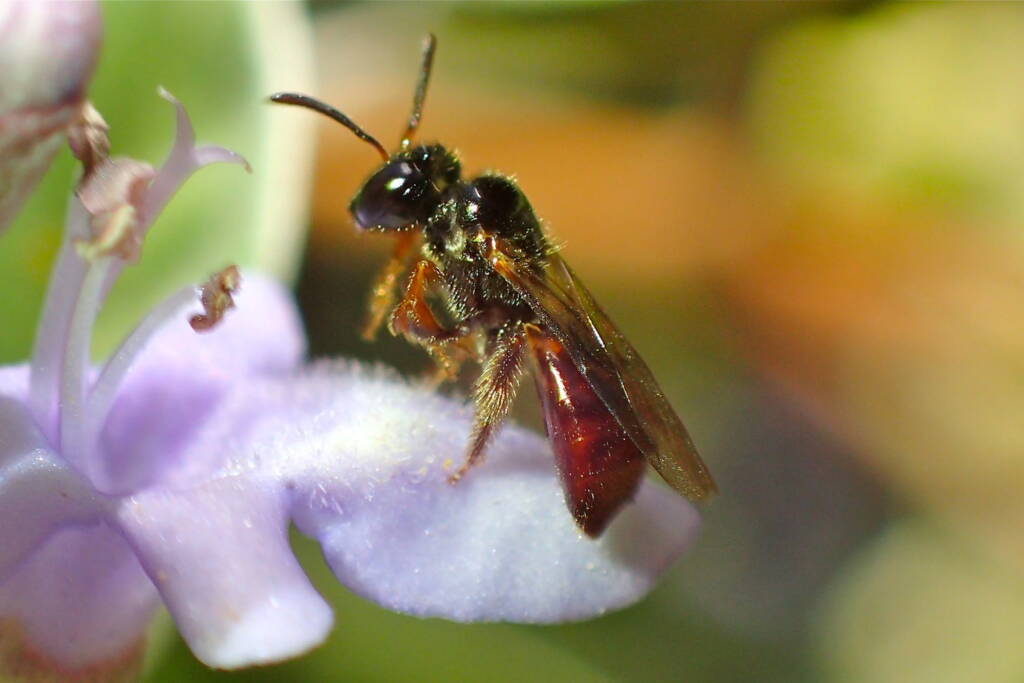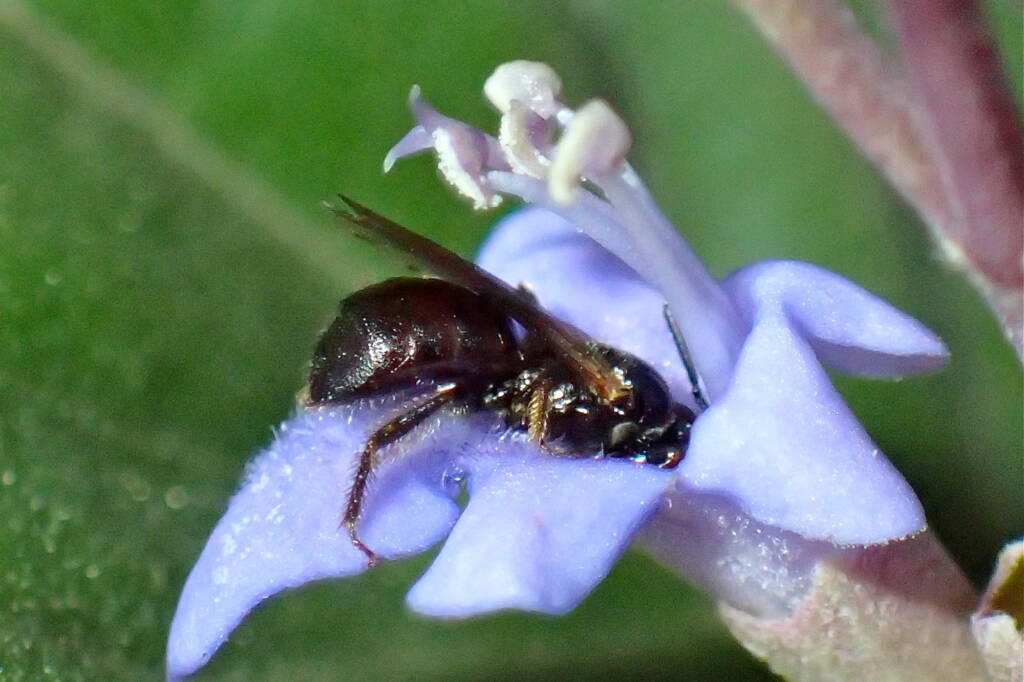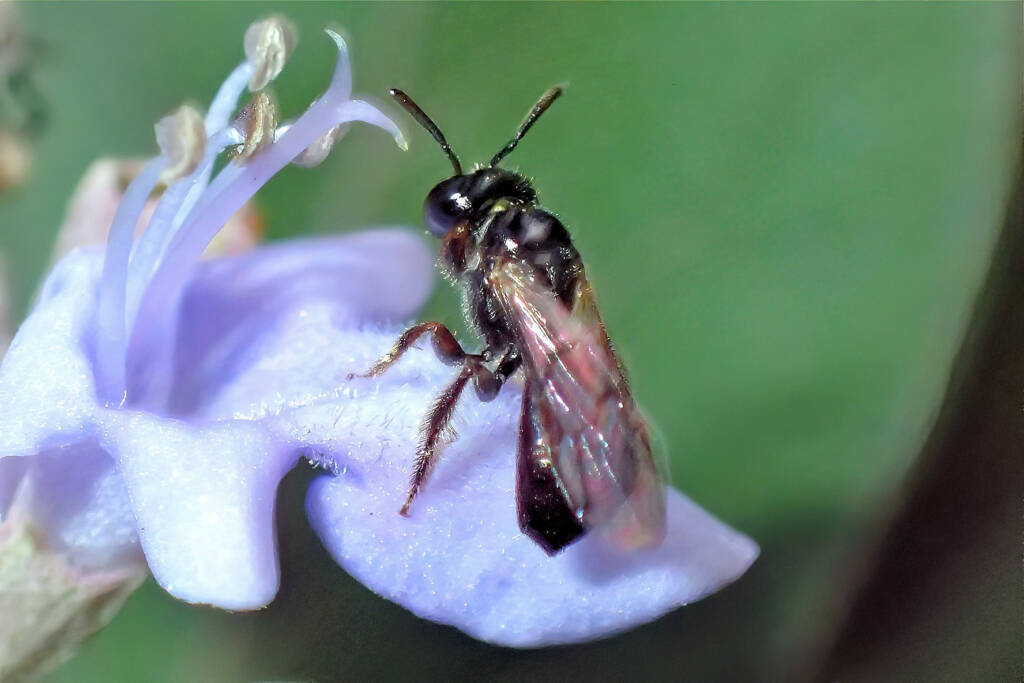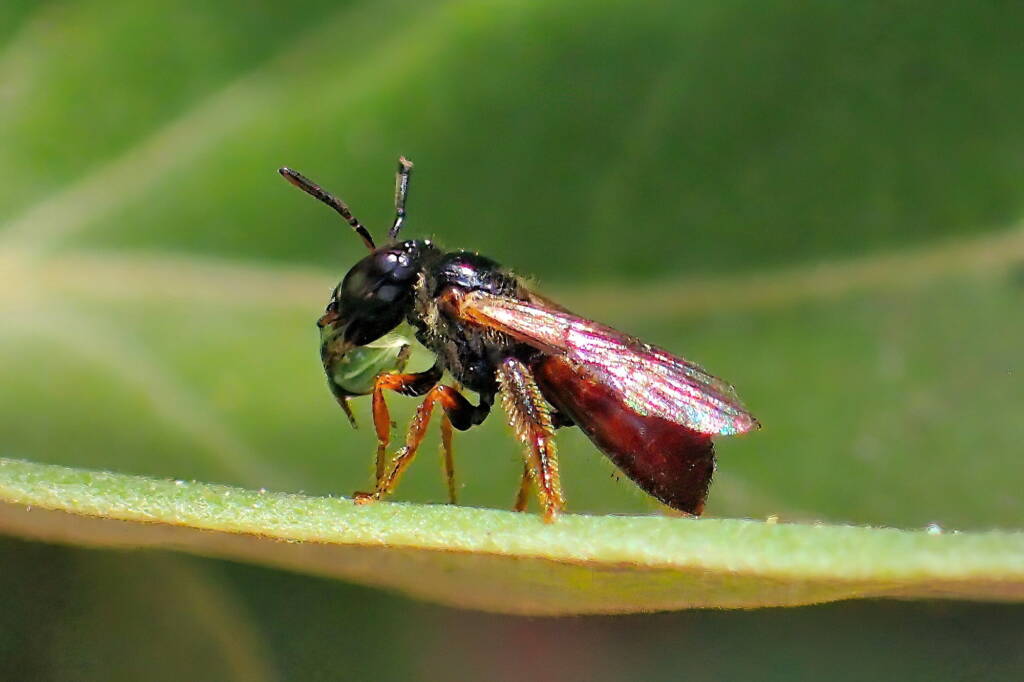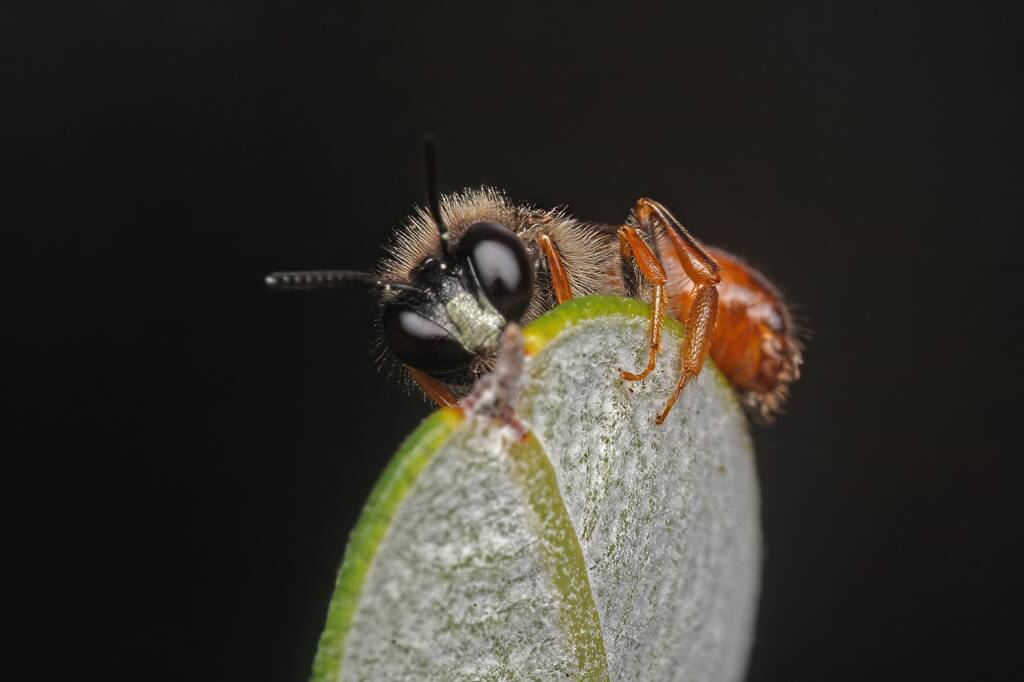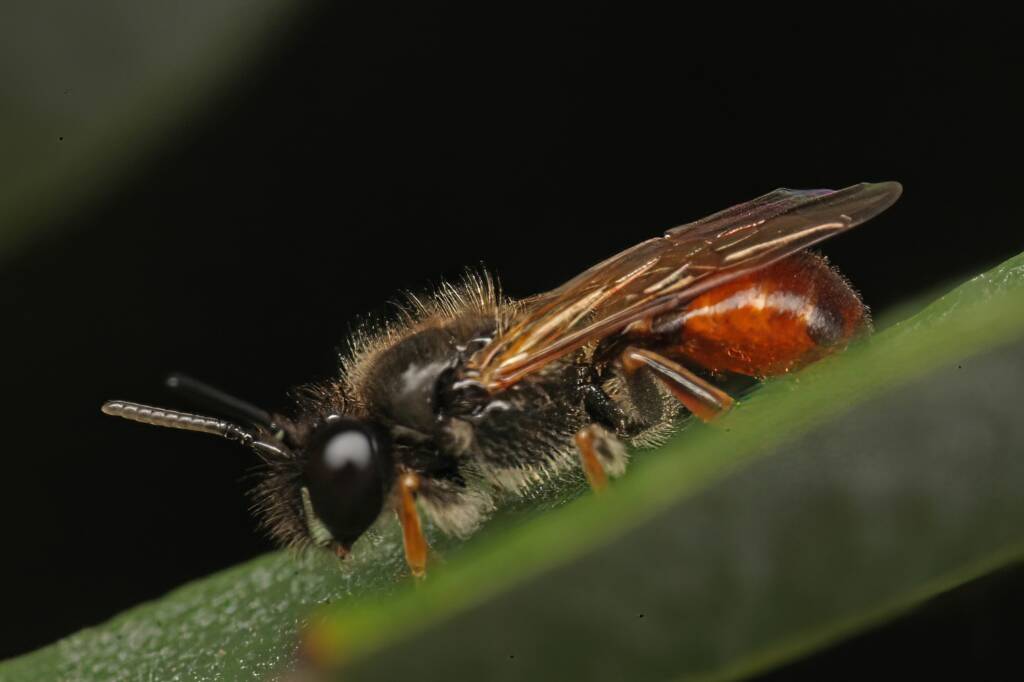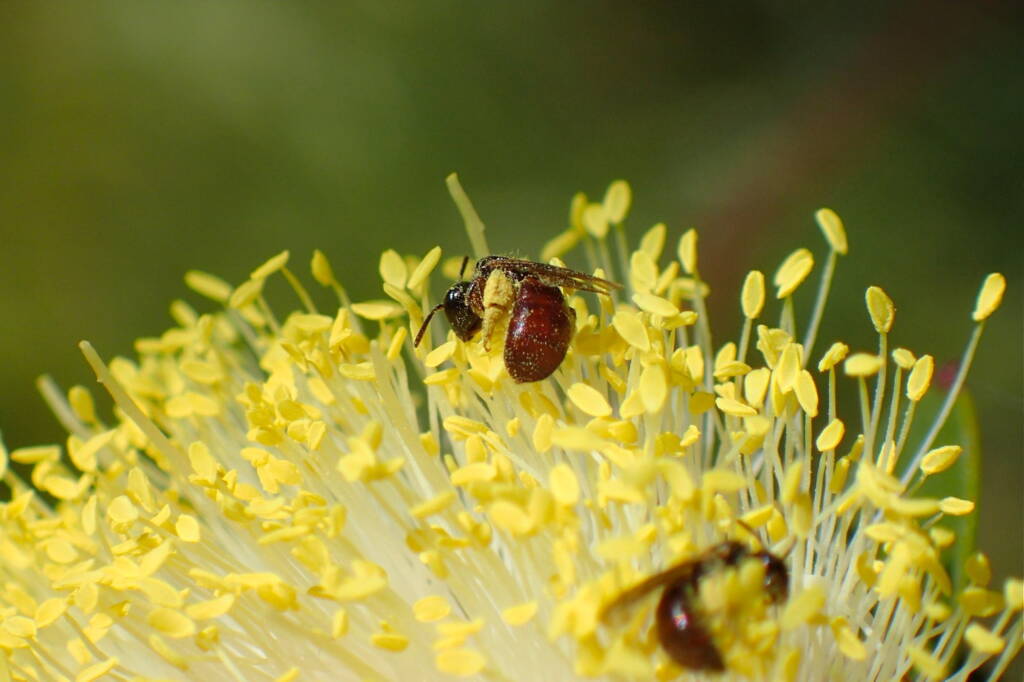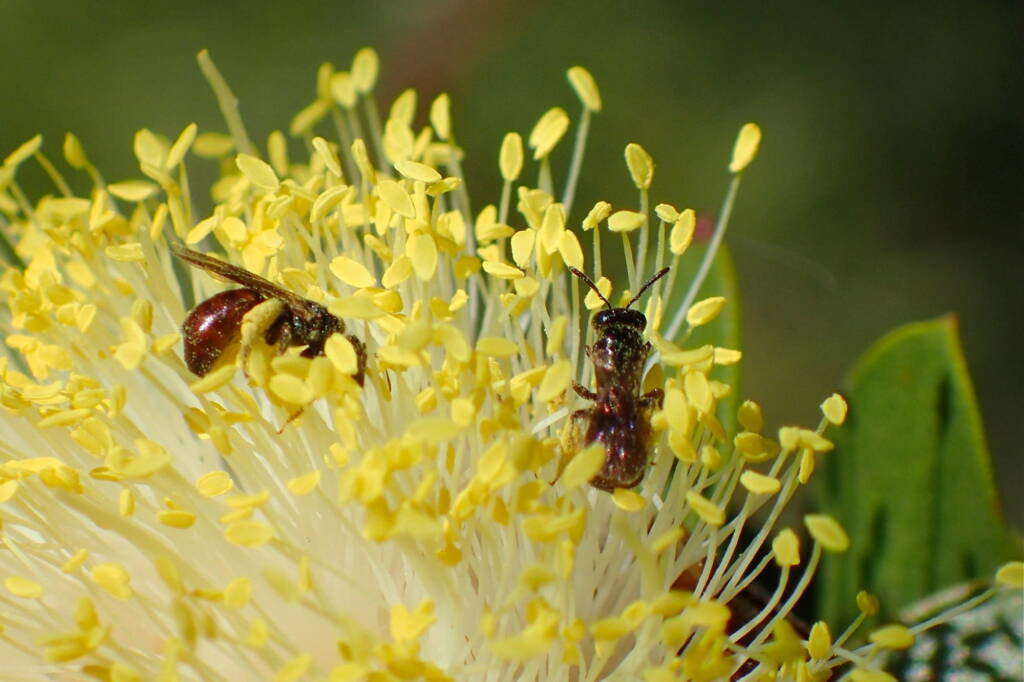BeesBees Anatomy Bee Behaviour Blogging Bees… Bees – image index Amegilla Bee Apis mellifera Austroplebeia australis Austrothurgus Braunsapis sp Ceylalictus perditellus Colletidae Euryglossinae Exoneura Homalictus Hyleoides bivulnerata Lasioglossum Lasioglossum (Chilalictus) Lipotriches Megachile Meroglossa Stenotritidae Tetragonula Thyreus Xylocopa
Photographs and Author Gary Taylor ◦

The genus Exoneura are commonly known as Reed Bees and are found in all states and territories of Australia, although they are more concentrated in the south.
They are up to 8 mm long and nest inside the pithy stems of plants such as tree ferns and grass trees, with two or more bees known to share a nest.
They are also known to nest in exotic plants such as the canes of Lantana (a known weed species in Australia).
They have a glossy black head and thorax. The abdomen is black or an orange-red in colour and wedge shape abdomen (as viewed from the side).
People made a joke about curbing ones addiction to bee photography, haha don’t even try 😃 Every time you take a bunch of pics you capture expressions and actions you haven’t seen… For me, getting these pics a couple of days ago was like Woohoo, the first pics I’ve got of Exoneura just staying still and looking cute, in all my other pics they’re busy being bees… And so the albums grow (as does your your knowledge) but you never stop wanting to get that better shot, or better still that GREAT shot 😄
Author Gary Taylor
Bubbling Bee – the Exoneura
With the flowering of the Tamarisk trees come the hoards of Exoneura. There’s always a few about over summer but at this time of the year they thrive, everywhere you look there’s little bees foraging on the new flowers, if you see one not moving it’s probably bubbling, like this one. I’ve seen it plenty of times but I still love the clarity of the nectar bubble and the way it captures the image behind, inverting it as a lens does 🙂
Author Gary Taylor
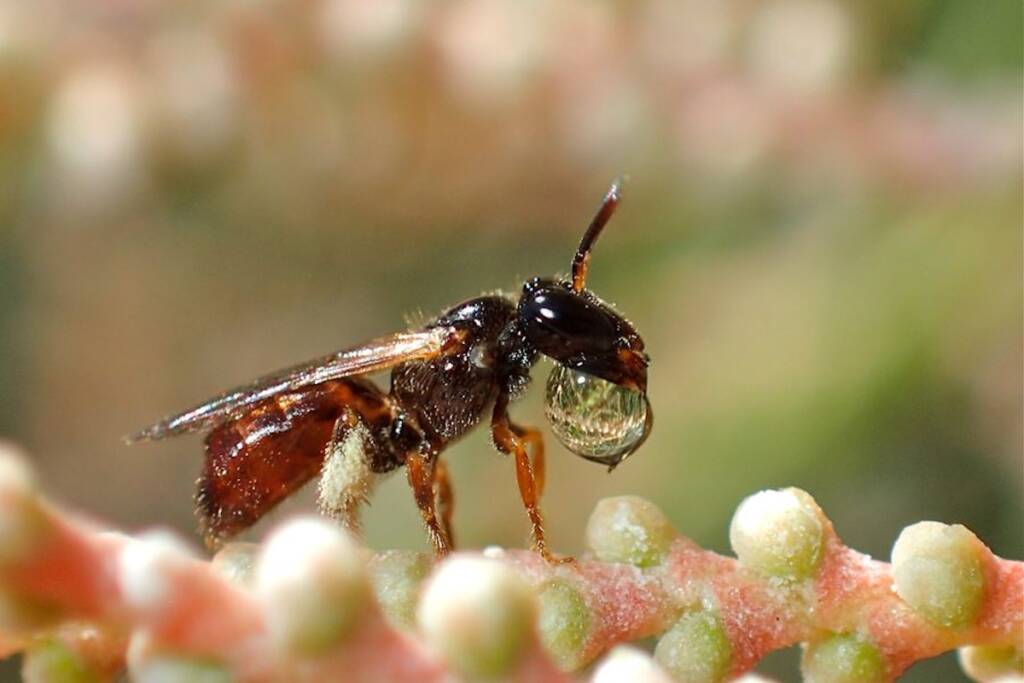
Like a number of our native bees, the Exoneura can also be seen “bubbling”.
The act of when “a bee bubble” is a process by which the bee is said to be concentrating the nectar that they have collected from flowers, making it more suitable for their needs. Many native bee species are know to do this and have been seen blowing bubbles. As well as the genus Exoneura, other genus include Lasioglossum, subgenus Homalictus, the species Amegilla chlorocyanea, as well as many of the bees from the family Colletidae who are known to blow bubbles.
Photographs Marc Newman
Following photographs by Marc Newman are of a male Exoneura sp. Location Ballandean, Queensland.
- Scientific classification
- Kingdom: Animalia
- Phylum: Arthropoda
- Subphylum: Hexapoda
- Class: Insecta
- Informal: Pterygotes
- Order: Hymenoptera
- Superfamily: Apoidea
- Informal: Apiformes
- Family: Apidae
- Subfamily: Xylocopinae
- Tribe: Allodapini
- Genus: Exoneura
- Subgenus:
- Exoneura (Brevineura) Michener, 1965
- Exoneura (Exoneura) Smith, 1854
- Exoneura (Inquilina) Michener, 1961
- Species:
- Exoneura marjoriella Rayment, 1949
- Exoneura nigrescens Friese, 1899
- Exoneura rufa Rayment, 1935
Footnote & References
- Photographs and content contributor © Gary Taylor
- Exoneura Smith, 1854, Atlas of Living Australia, https://bie.ala.org.au/species/urn:lsid:biodiversity.org.au:afd.taxon:b4d68ed1-9f02-4763-8ed7-f3d9c5a572ba
BeesBees Anatomy Bee Behaviour Blogging Bees… Bees – image index Amegilla Bee Apis mellifera Austroplebeia australis Austrothurgus Braunsapis sp Ceylalictus perditellus Colletidae Euryglossinae Exoneura Homalictus Hyleoides bivulnerata Lasioglossum Lasioglossum (Chilalictus) Lipotriches Megachile Meroglossa Stenotritidae Tetragonula Thyreus Xylocopa

